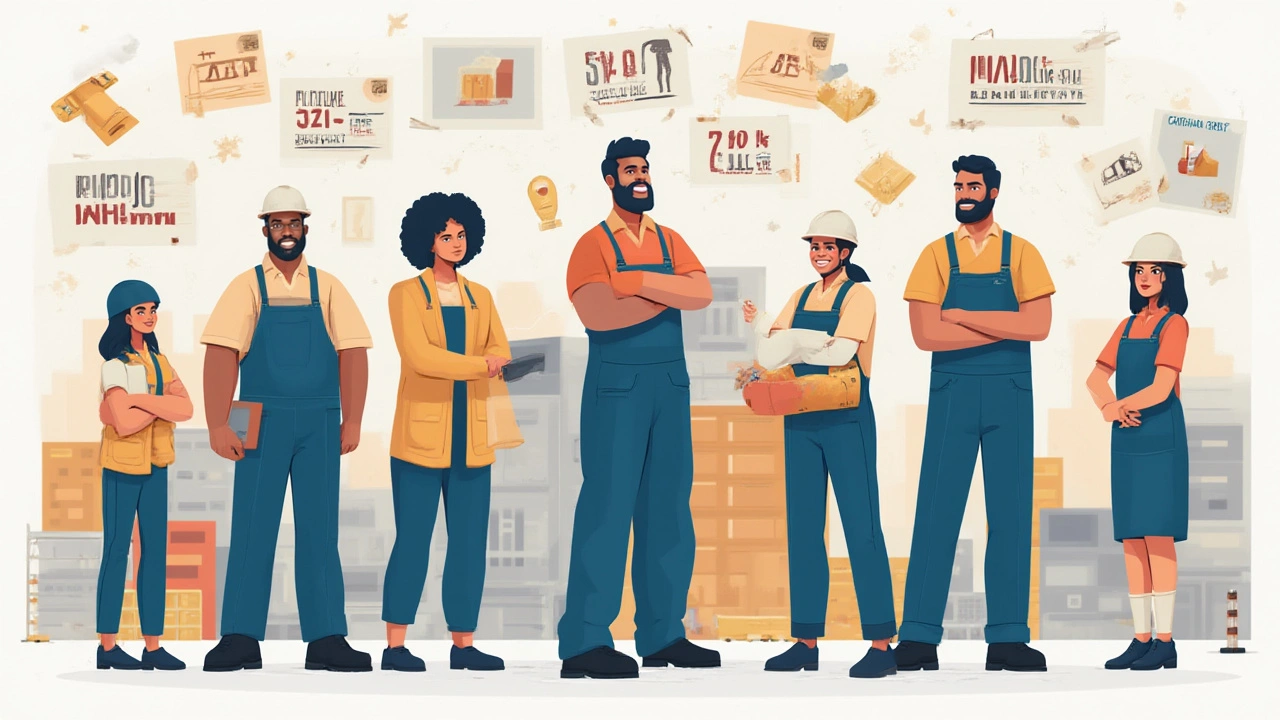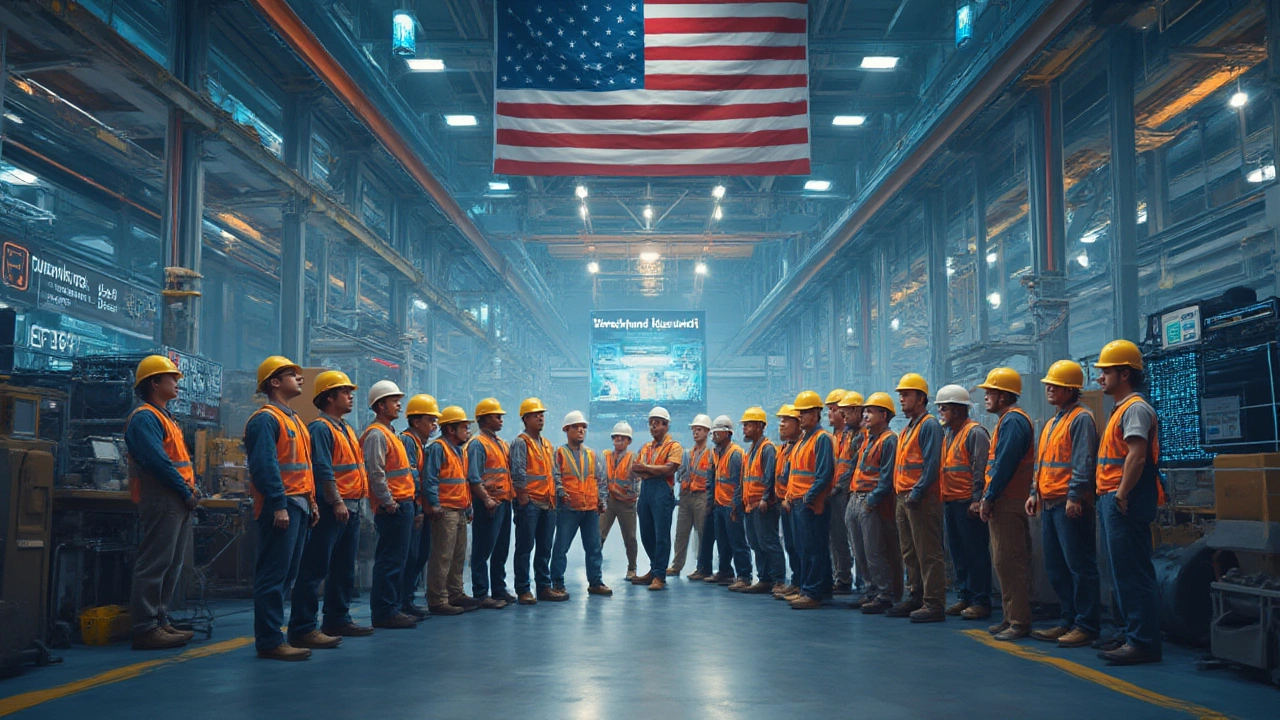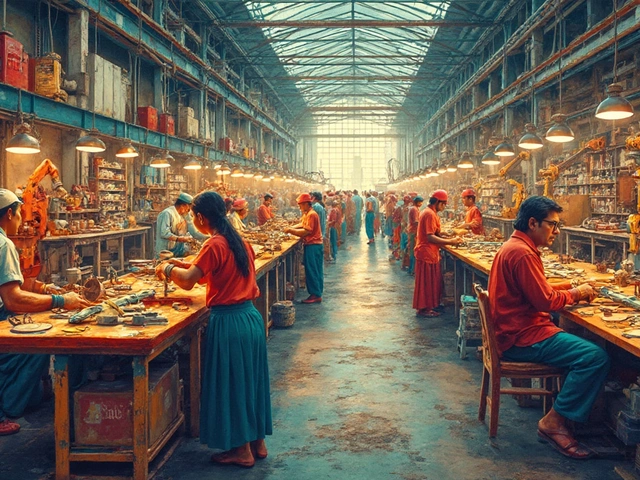Imagine this: a few decades back, factory whistles signaled the start and end of the workday for millions of Americans. Nowadays, you might hear more about tech offices or remote gigs than assembly lines, but manufacturing still plays a massive role in America’s story. The classic image of a factory worker might feel like it’s fading, but let’s dig into what’s really happening with manufacturing jobs. How many folks still clock into factories and plants? What percent of the US workforce is keeping our assembly lines humming in 2025?
Where Does Manufacturing Stand in the US Workforce?
Pull out the latest numbers and you’ll get a clear picture: as of May 2025, manufacturing jobs made up a bit more than 8% of the US workforce. The US Bureau of Labor Statistics pegs the figure close to 12.6 million people out of about 158 million nonfarm jobs. To put this into perspective, healthcare and retail outstrip manufacturing by a wide margin, but the sector is still a heavyweight when it comes to economic value.
Now, let’s get real: 8% might not sound huge, but it’s not small potatoes either. Every time you see a car roll out of Detroit, or a Boeing 737 take off, remember—there are thousands of hands behind each product. Whether it’s advanced robotics in an Austin microchip facility or skilled welders in Ohio making parts for wind turbines, manufacturing keeps a big chunk of America’s economic wheels spinning. And while the number isn’t what it used to be, its impact goes deeper than most people think.
Here’s why the workforce share matters: Manufacturing jobs have a punch above their weight in terms of average pay, skills required, and their ripple effect on other industries (think trucking, supplies, and services). The sector also fuels exports and is a key driver of tech innovation—Silicon Valley might draw headlines, but many of the physical gadgets come from manufacturing floors across the Midwest and South.
Let’s summarize some of the key labor stats in an easy visual:
| Year | Manufacturing Jobs (millions) | Total US Nonfarm Workforce (millions) | Percentage in Manufacturing |
|---|---|---|---|
| 1990 | 17.7 | 109 | 16.2% |
| 2000 | 17.3 | 131 | 13.2% |
| 2010 | 11.5 | 130 | 8.8% |
| 2020 | 12.3 | 152 | 8.1% |
| 2025 | 12.6 | 158 | 8.0% |
If you’re only looking at job numbers, it seems like manufacturing has shrunk. But look closer—it’s evolved into something a little more high-tech and specialized.
The Story Behind the Numbers: Why the Shift?
Jump back to the 1970s and about a quarter of American workers were in manufacturing. Why has this number dropped so much? The reasons are complicated but not really a secret. Automation gets the headlines—those robots and smart machines are doing tasks that used to need a crew of people. Then you’ve got globalization. If you picked up a T-shirt or smartphone lately, there’s a good chance it was made in another country, often where labor costs less.
Don’t miss the fact that not all US manufacturing jobs have vanished—they just look different. Instead of thousands producing basic items in big cities, you’ll see smaller, nimble teams making specialized products: circuit boards in Texas, aerospace parts in Kansas, or medical devices in Minnesota. Plants these days are packed with sensors, controlled by software, and staffed by folks who know their way around both a lathe and a laptop.
And even though there are fewer jobs in manufacturing itself, each job matters. Studies from Georgetown University’s Center on Education and the Workforce found that for every 100 manufacturing jobs, about 250 additional jobs are supported in other sectors. Truck drivers, tech support, logistics planners, engineers—the ecosystem is massive.
There’s another twist to the story: the pay gap. Manufacturing jobs still offer higher median wages than retail or hospitality. In early 2025, the average wage for a manufacturing worker was around $68,000 per year, including benefits—compared to the US average of about $62,000.

Trends: Who’s Working in Manufacturing Today?
Today’s factory floors don’t look like the images in old black-and-white photos. First, things are more diverse than ever. Women now make up about 29% of the manufacturing workforce, a jump from previous decades. That’s not exactly parity, but it’s been on the rise as more companies recruit from varied backgrounds. More jobs are being filled by folks with technical certifications or associate degrees—programming a machine requires different skills than running one manually.
Age is another twist. The “silver tsunami” is a real thing. The average age of an American manufacturing worker is now just over 44. That’s a bit older than the national average. Companies are scrambling to fill jobs as experienced workers retire: there’s a huge opportunity here for young people with technical chops.
You’d think most jobs would be clustered in old factory towns, but not anymore. Sure, Michigan and Ohio are still major hubs, but manufacturing has burst out all over the map. Southern states like Alabama, Texas, and South Carolina have seen a surge, especially with car plants and aerospace. Even high-cost places like California are doing big business in advanced manufacturing—think semiconductors, green tech, and biotech parts.
And let’s not forget about resilience. When COVID-19 hit, the world realized the risk of depending too much on overseas suppliers. American manufacturing got a second look, and recent investments—especially with semiconductor plants (thanks to the CHIPS Act)—mean thousands of new, high-tech jobs.
The Future: Is Manufacturing Bouncing Back?
Every year, you’ll hear fresh takes on whether manufacturing is “coming back” in the US. The truth is, it never fully disappeared—just evolved. The last few years brought new government incentives, especially aimed at high-tech fields like semiconductors, batteries, and clean energy tech. These investments aren’t grabbing headlines on cable news, but they are creating jobs from Arizona to New York.
Let’s clear up one myth: even if these policies bring jobs home, it doesn’t mean we’re going back to the 1960s. Most new factories use advanced automation, so the number of traditional manual jobs probably won’t explode. However, there’s a boom in roles that blend IT and practical knowledge—think robot technicians or data analysts monitoring factory lines. That’s driving demand for training in robotics, AI, and cyber-physical systems.
What does this mean if you’re picking a career, or helping someone plan theirs? If you’re good with tech, enjoy problem-solving, and don’t mind getting your hands dirty, manufacturing is packed with opportunity. And the sector is hungry for fresh talent. Companies are even teaming up with local colleges to create “earn while you learn” apprenticeships. Skilled trades—welders, machinists, automation techs—can earn six figures after a few years on the job. That’s not hype; it’s reality for people who master the right skills and grab the opportunities popping up from Charlotte to Phoenix.
Want to stand out? Get experience with programmable logic controllers (PLCs), quality control systems, or industrial cybersecurity. These are fields where companies can’t hire fast enough right now.

Tips for Navigating the Manufacturing Job Market
So, how do you get into today’s manufacturing sector, or move up if you’re already there? Here are some insider moves:
- Focus on technical skills. Knowing how to run a CNC machine, program robots, or read digital blueprints can set you apart.
- Certifications matter. Quick, focused courses from local technical schools can open doors. The National Institute for Metalworking Skills (NIMS) or the Manufacturing Skill Standards Council (MSSC) credentials are respected in the industry.
- Don’t ignore the ‘soft skills.’ Communication, teamwork, and problem-solving are just as important as tech know-how. Today’s plants are collaborative, high-paced environments.
- Network locally. Manufacturing isn’t just faceless corporations—many are family-owned or mid-sized businesses. Attend local trade shows or join regional industry groups if you’re exploring options.
- Check out new apprentice programs. Many plants partner with community colleges to train and hire students right after graduation. These programs pay you to learn on the job—a smart option if you want to avoid student loan debt.
- Stay curious. Technology won’t slow down. Keeping up with trends—like 3D printing, IoT in factories, or new green manufacturing standards—will keep you relevant.
One more thing: Don’t be afraid to start small. Entry-level jobs exist, and many managers or plant engineers worked their way up from the line. The industry loves practical experience, so even a summer internship can be a golden ticket.
Manufacturing might not be as visible as it once was, but don’t count it out. Every time you drive a car, power up a computer, or pop open a can of soda, you’re connecting with the work of American factories. That 8%? They’re packing a bigger punch than their headcount. Next time you hear about AI and robots, remember—the smart future of manufacturing needs people too.






